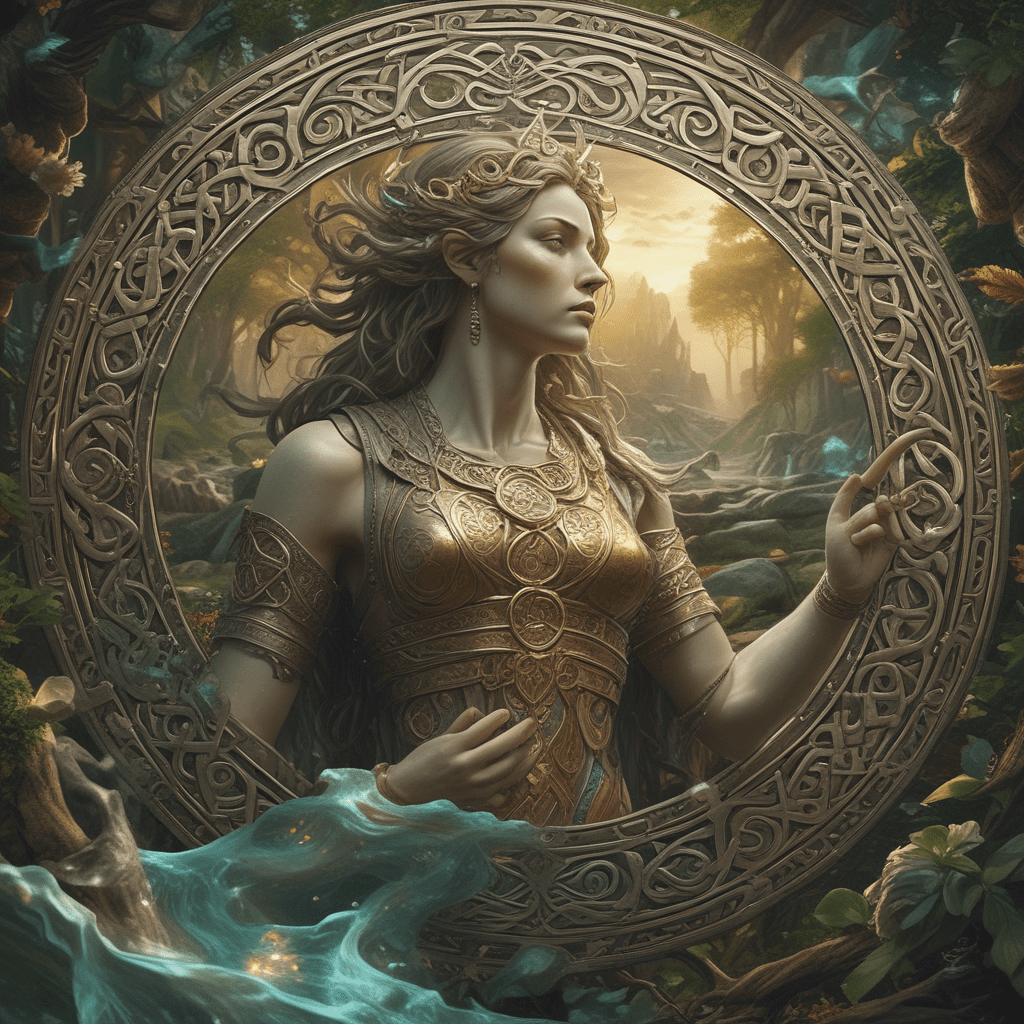The Symbolism of Colors in Celtic Mythological Beliefs
In Celtic mythology, color holds great significance as it is closely intertwined with spiritual and philosophical beliefs. Various colors were associated with different deities, traits, and aspects of nature, reflecting the deep symbolism and cultural meanings rooted in Celtic traditions. Let us delve into the fascinating world of Celtic colors and their mythological significance.
The Color Green in Celtic Mythology
Green, often considered the most prominent color in Celtic mythology, symbolizes rebirth, renewal, and growth. It is closely linked to the lushness of the natural world, particularly evident in the rolling green hills of Ireland. The Green Man, a deity representing the spirit of nature, embodies the vitality and regenerative power associated with this color.
The Significance of Gold and Silver
Gold and silver hold high importance in Celtic mythology, representing the sun and the moon, respectively. Gold symbolizes wealth, abundance, and the ultimate prize, while silver conveys purity, healing, and intuition. These precious metals signify the celestial forces and play a crucial role in mystical rituals.
The Mystical Aura of Blue and White
Blue, often associated with the sky and the sea, represents mystery, transcendence, and wisdom in Celtic lore. It embodies the vast expanse of the heavens and the depth of the ocean, symbolizing the unknown and the infinite possibilities of the universe. White, on the other hand, symbolizes purity, light, and enlightenment, invoking the presence of the divine and spiritual clarity.
The Energy of Red and Yellow
Red and yellow hold their own unique symbolism in Celtic mythological beliefs. Red signifies passion, vitality, and courage, often linked to warrior figures and strength in battle. Yellow represents knowledge, inspiration, and the power of the mind. The interplay between these vibrant colors reflects the intricate balance between emotional fervor and intellectual prowess in Celtic narratives.
Throughout Celtic mythology, colors serve as powerful conduits of meaning, weaving intricate narratives and embodying deeper truths. Understanding the symbolism of colors in Celtic belief systems provides a profound insight into the spiritual and cultural landscape of the ancient Celts.
Frequently Asked Questions about The Symbolism of Colors in Celtic Mythological Beliefs
What role did colors play in Celtic mythological beliefs?
In Celtic mythology, colors held significant symbolic meanings, often representing various aspects of nature, emotions, and spiritual beliefs.
Can you provide examples of color symbolism in Celtic mythology?
Certainly! For instance, the color green symbolized life, growth, and rebirth, while red represented vitality and passion. White stood for purity and truth, and black signified mystery and the unknown.
How were these color symbols used in Celtic rituals and ceremonies?
Colors were incorporated into various aspects of Celtic rituals and ceremonies, such as in the decorations, clothing, and even body paint worn by participants. Each color was carefully chosen to align with the specific significance of the event.
Did different Celtic regions or tribes have unique interpretations of color symbolism?
Yes, indeed. Different Celtic regions and tribes often had their own interpretations of color symbolism, influenced by their local environment, traditions, and beliefs. This diversity added richness and depth to Celtic mythological practices.
What can we learn from the symbolism of colors in Celtic mythological beliefs?
Studying the symbolism of colors in Celtic mythology can provide us with insights into the deep spiritual connection the Celts had with nature, emotions, and the unseen realms. It enhances our understanding




